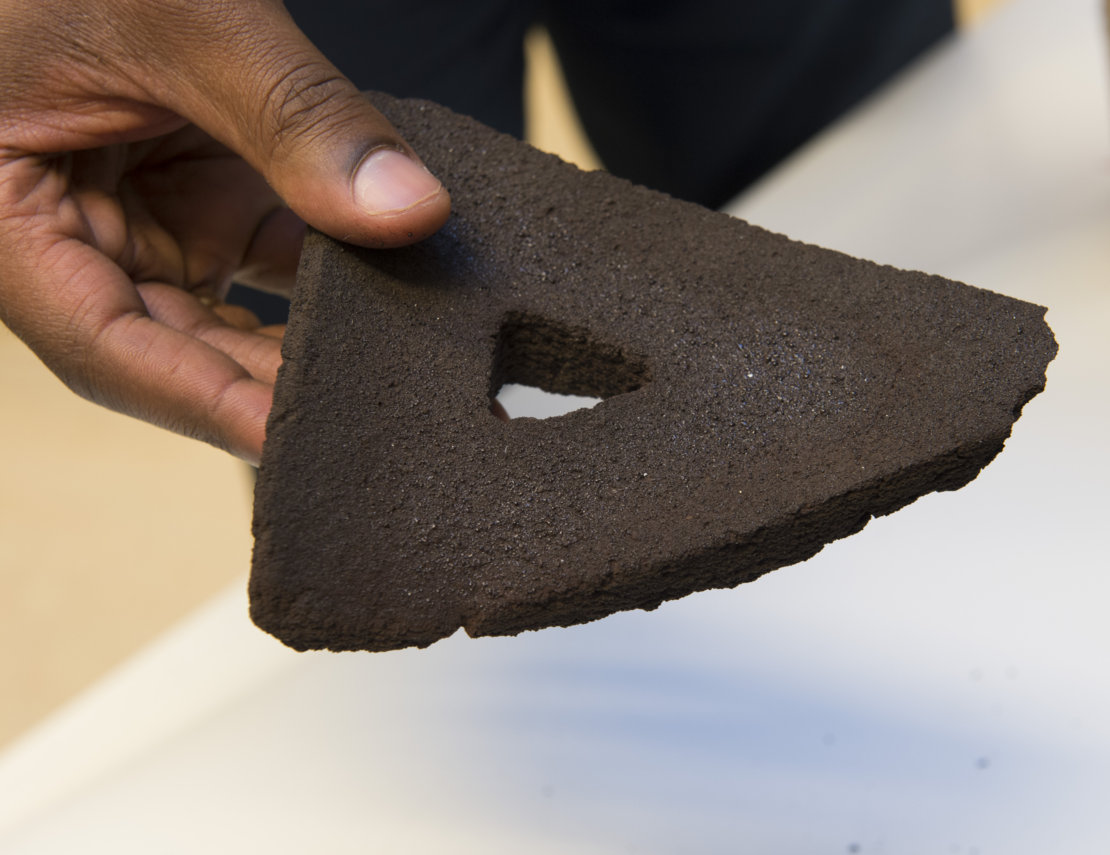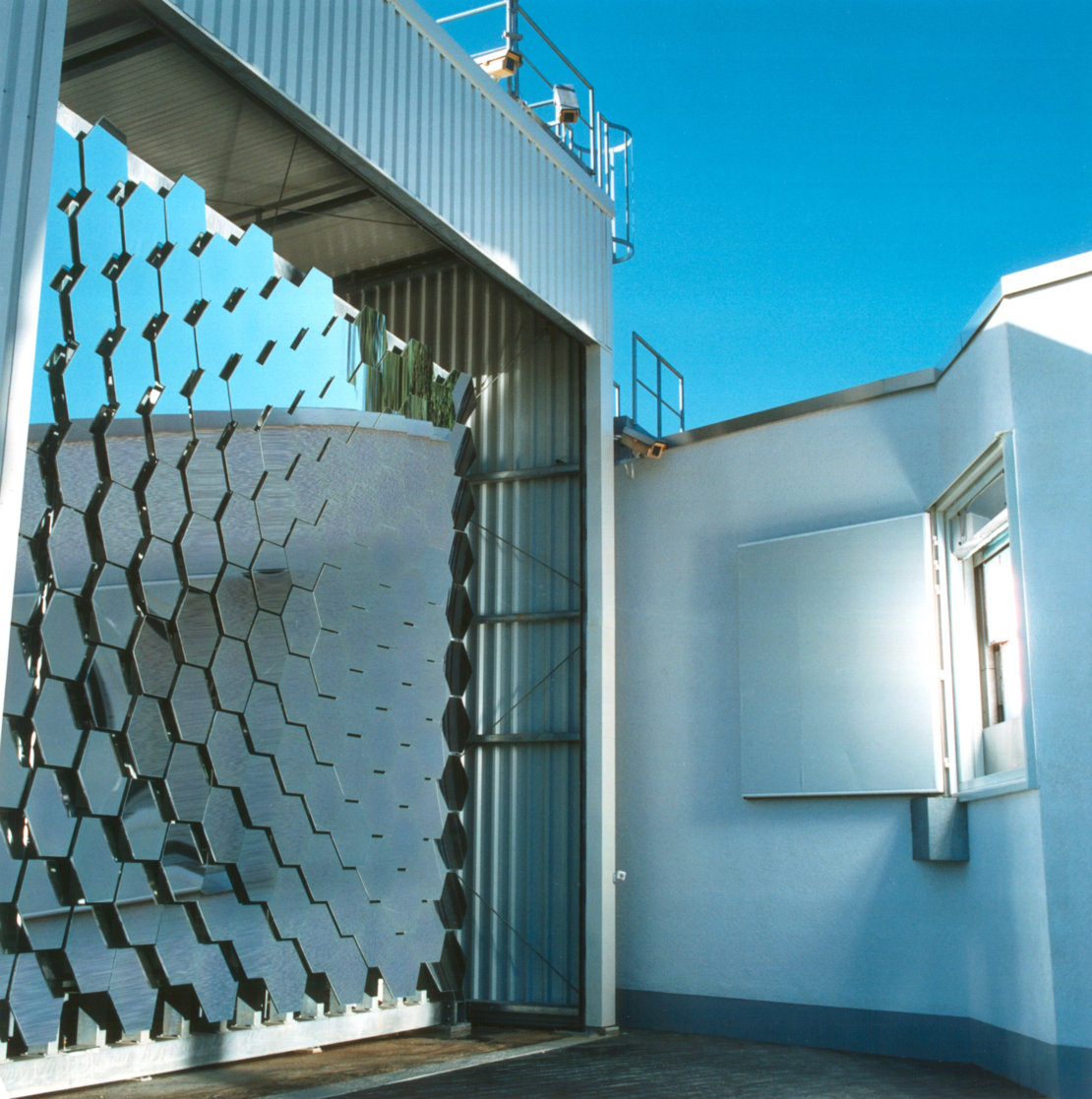New Method Builds Bricks Using Fake Lunar Soil, Heat from Sun

Moon explorers could one day build their houses from bricks made out of lunar soil, or regolith, using just the energy of the sun, according to a new experiment by the European Space Agency (ESA).
Using volcanic material with composition similar to that of lunar dust, a team led by materials engineer Advenit Makaya 3D-printed bricks and baked them in a solar furnace. The German Aerospace Center's (DLR) facility in Cologne, Germany, runs the furnace.
"This was done on a 3D-printer table, to bake successive 0.1-millimeter layers of moon dust at 1,000 degrees Celsius [1,800 degrees Fahrenheit]," Makaya said in a statement. "We can complete a 20 x 10 x 3-centimeter [8 x 4 x 1 inches] brick for building in around 5 hours." [3D Printing: 10 Ways It Could Transform Space Travel]
The researchers said the strength of the bricks is equivalent to that of the mineral gypsum, which is a major component of plaster. However, the team has not yet performed all the necessary mechanical testing.
The project is part of ESA's initiative aiming to develop technologies that could allow future lunar colonists to take advantage of local resources on the moon, according to the statement. By using locally sourced materials, the explorers would avoid the need to bring everything from Earth, and could travel more cheaply with a smaller spacecraft.
However, the equipment used to make the 3D-printed brick is rather bulky. It consists of 147 curved mirrors focusing sunlight into a high-temperature beam that sinters the regolith into a solid mass.
"For now, this project is a proof of concept, showing that such a lunar construction method is indeed feasible," Makaya said in the same statement.
Get the Space.com Newsletter
Breaking space news, the latest updates on rocket launches, skywatching events and more!

As the weather in Cologne doesn't always provide the pure sunlight needed for the printing process, the team sometimes had to help the natural forces with an array of xenon lamps, similar to those found in cinema projectors, the study said.
The researchers found that some of the lunar bricks tended to warp around the edges, which cool faster than the center.
"We're looking at how to manage this effect, perhaps by occasionally accelerating the printing speed so that less heat accumulates within the brick," said Makaya.
The team will continue developing the technology as part of the EU-funded RegoLight program.
"Our demonstration took place in standard atmospheric conditions, but RegoLight will probe the printing of bricks in representative lunar conditions: vacuum and high-temperature extremes," Makaya said.
Follow us @Spacedotcom, Facebook and Google+. Original article on Space.com.
Join our Space Forums to keep talking space on the latest missions, night sky and more! And if you have a news tip, correction or comment, let us know at: community@space.com.

Tereza is a London-based science and technology journalist, aspiring fiction writer and amateur gymnast. Originally from Prague, the Czech Republic, she spent the first seven years of her career working as a reporter, script-writer and presenter for various TV programmes of the Czech Public Service Television. She later took a career break to pursue further education and added a Master's in Science from the International Space University, France, to her Bachelor's in Journalism and Master's in Cultural Anthropology from Prague's Charles University. She worked as a reporter at the Engineering and Technology magazine, freelanced for a range of publications including Live Science, Space.com, Professional Engineering, Via Satellite and Space News and served as a maternity cover science editor at the European Space Agency.









